
- Home
- Travel Packages
- Top Destination
-
Travel Attraction
By Category
Top Attraction

- Travel Agents
- Car Rentals
- Hotels
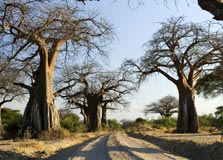
Zanzibar, an enchanting archipelago off the coast of Tanzania, is renowned for its pristine beaches, rich history, and vibrant culture. The main island, Unguja, offers a captivating blend of African, Arab, Indian, and European influences, most evident in Stone Town—a UNESCO World Heritage Site known for its winding alleys, ornate doors, and historic buildings. Once a hub for spice and slave trade, Zanzibar’s past is deeply woven into its architecture and traditions. The island’s turquoise waters and coral reefs make it a paradise for snorkeling, diving, and water sports. Inland, spice farms and lush forests offer immersive experiences into local agriculture and biodiversity. Zanzibar’s cuisine, music, and festivals reflect its multicultural heritage, with Swahili culture at the heart of daily life. Whether exploring historical sites, relaxing on white-sand beaches, or engaging with local communities, Zanzibar offers a unique and unforgettable escape steeped in beauty and cultural depth
Explore More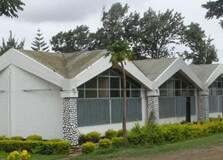
Arusha, nestled at the foot of Mount Meru in northern Tanzania, is a bustling city known as the gateway to some of Africa’s most iconic safari destinations. It serves as the starting point for adventures to Serengeti National Park, Ngorongoro Crater, Lake Manyara, and Mount Kilimanjaro, making it a hub for wildlife tourism and trekking enthusiasts. With its cool climate and scenic surroundings, Arusha offers a refreshing contrast to the country’s coastal regions. The city is also a center for diplomacy and education, hosting the East African Community headquarters and the International Criminal Tribunal for Rwanda. Arusha’s vibrant markets, cultural centers, and museums reflect the rich heritage of Tanzania’s diverse ethnic groups. Visitors can explore local crafts, taste traditional cuisine, and engage with Maasai culture. Blending natural beauty, cultural depth, and international significance, Arusha stands as a dynamic and welcoming destination for travelers seeking both adventure and insight.
Explore More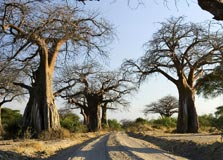
Dodoma, the capital city of Tanzania, is centrally located and serves as the country’s administrative and political hub. Officially designated as the capital in 1974, Dodoma has gradually evolved from a quiet town into a growing urban center, housing key government institutions, including the Parliament and various ministries. Its strategic location makes it accessible from all regions of Tanzania, reinforcing its role in national governance. The city is characterized by a semi-arid climate, with rolling hills and open plains surrounding it. Agriculture, especially grape farming, plays a significant role in the local economy. Dodoma also boasts cultural landmarks such as the Nyerere Square and the University of Dodoma, one of East Africa’s largest universities. While it maintains a slower pace compared to Dar es Salaam, Dodoma reflects Tanzania’s vision for balanced development. With its blend of governance, education, and emerging infrastructure, Dodoma is steadily shaping its identity as a modern African capital.
Explore More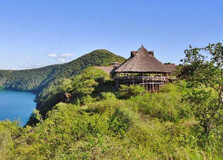
Kilimanjaro, located in northeastern Tanzania, is home to Africa’s highest peak—Mount Kilimanjaro—rising majestically to 5,895 meters above sea level. This iconic mountain, a dormant volcano with three cones (Kibo, Mawenzi, and Shira), draws adventurers from around the world seeking to conquer its snow-capped summit. Surrounded by Kilimanjaro National Park, the region offers rich biodiversity, from lush rainforests and alpine meadows to rare wildlife species. The area is also culturally vibrant, inhabited by the Chagga people, known for their farming traditions and warm hospitality. Moshi, the main town near the mountain, serves as a base for climbers and a center for coffee production. Kilimanjaro’s slopes support fertile agriculture, including bananas, maize, and coffee.
Explore More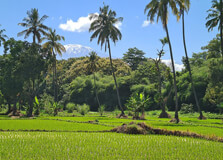
Moshi, located in northern Tanzania at the base of Mount Kilimanjaro, is a charming town known for its scenic beauty, coffee plantations, and vibrant local culture. As the gateway to Africa’s highest peak, Moshi attracts trekkers and adventurers from around the world, offering easy access to Kilimanjaro National Park and its breathtaking landscapes. The town enjoys a cool climate and lush surroundings, making it ideal for agriculture, especially the cultivation of high-quality Arabica coffee. Moshi’s relaxed atmosphere is complemented by bustling markets, cozy cafes, and a strong sense of community. It’s also a center for education and healthcare, with several institutions and NGOs operating in the area. Cultural experiences abound, from Chagga traditions to local music and cuisine. Whether you're preparing for a mountain climb, exploring coffee farms, or simply enjoying the peaceful ambiance, Moshi offers a unique blend of adventure, hospitality, and natural charm in Tanzania’s Kilimanjaro region.
Explore More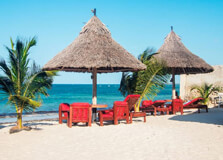
Dar es Salaam, Tanzania’s largest city and former capital, is a bustling metropolis that blends coastal charm with urban energy. Located along the Indian Ocean, it serves as the country’s main port and commercial hub, playing a vital role in trade, industry, and transportation across East Africa. The city’s name, meaning “Haven of Peace,” reflects its historical roots as a quiet fishing village that has grown into a dynamic urban center. Dar es Salaam showcases a rich cultural tapestry, with influences from African, Arab, Indian, and European communities. Its vibrant markets, diverse cuisine, and lively arts scene reflect this multicultural heritage. Key attractions include the National Museum, Kariakoo Market, and nearby beaches like Coco and Kunduchi. Despite its rapid growth, the city retains a laid-back coastal vibe. With its strategic importance, cultural depth, and scenic beauty, Dar es Salaam stands as a gateway to Tanzania’s mainland and offshore treasures like Zanzibar.
Explore More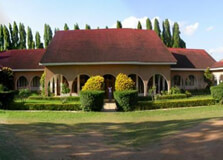
Morogoro, located in eastern Tanzania at the base of the Uluguru Mountains, is a lively town known for its lush landscapes, agricultural significance, and educational institutions. Often referred to as the “breadbasket” of Tanzania, Morogoro thrives on farming, producing crops like maize, rice, sugarcane, and tropical fruits. Its fertile soil and favorable climate make it a key contributor to the country’s food supply. The town is also home to Sokoine University of Agriculture, a leading institution in agricultural research and education. Morogoro’s proximity to Mikumi National Park offers easy access to wildlife and nature experiences, making it a convenient stop for travelers exploring southern Tanzania. Culturally diverse and environmentally rich, Morogoro blends rural charm with urban development. Its vibrant markets, scenic mountain trails, and community spirit create a welcoming atmosphere. Whether for study, farming, or adventure, Morogoro stands out as a dynamic and essential region in Tanzania’s heartland.
Explore More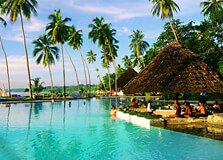
Tanga, located on Tanzania’s northeastern coast along the Indian Ocean, is a historic port city known for its laid-back charm, colonial architecture, and rich cultural heritage. As one of the country’s oldest towns, Tanga played a significant role in trade during the German and British colonial periods, particularly in sisal production, which remains a key economic activity. The city’s coastal location offers beautiful beaches, coral reefs, and access to marine parks like the nearby Tanga Coelacanth Marine Park. Tanga is also a gateway to the Amboni Caves, East Africa’s largest limestone cave system, and the scenic Usambara Mountains, ideal for eco-tourism and hiking. With its blend of Swahili culture, historical landmarks, and natural attractions, Tanga provides a tranquil alternative to Tanzania’s busier coastal cities. Its friendly community, tropical climate, and strategic location make it a unique destination for travelers seeking history, nature, and coastal serenity
Explore More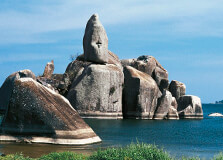
Mwanza, Tanzania’s second-largest city, is a vibrant lakeside metropolis located on the southern shores of Lake Victoria. Known as the “Rock City” for its striking granite outcrops, Mwanza blends natural beauty with urban energy. The city serves as a major commercial and transportation hub for the Lake Zone, supporting industries such as fishing, agriculture, and mining. Its scenic waterfront, bustling markets, and lively streets reflect a rich cultural tapestry, primarily influenced by the Sukuma people—the largest ethnic group in Tanzania. Mwanza’s proximity to Rubondo Island and Serengeti National Park makes it a strategic base for wildlife and nature excursions. The city is also home to educational institutions, healthcare centers, and growing infrastructure, contributing to its regional importance. With its mix of economic vitality, cultural depth, and stunning lake views, Mwanza offers a dynamic experience that captures the essence of Tanzania’s northern frontier.
Explore More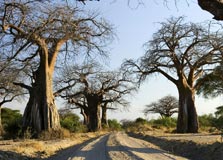
Kigoma-Ujiji, located on the eastern shores of Lake Tanganyika in western Tanzania, is a historically rich and culturally vibrant twin town. Kigoma serves as a key port and commercial center, while Ujiji is famed for its historical significance as the site where explorer Henry Morton Stanley met Dr. David Livingstone in 1871. This moment is commemorated at the Livingstone Memorial, a popular attraction for history enthusiasts. The region’s proximity to Lake Tanganyika—the world’s second-deepest freshwater lake—makes it vital for fishing, transport, and trade. Surrounded by lush hills and forests, Kigoma-Ujiji offers access to nearby natural wonders like Gombe Stream National Park, renowned for its chimpanzee research initiated by Jane Goodall. Home to diverse ethnic communities, the area reflects a rich Swahili and inland cultural blend. With its mix of historical legacy, ecological treasures, and lakeside charm, Kigoma-Ujiji stands as a unique and compelling destination in Tanzania’s western frontier.
Explore More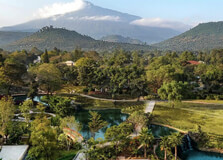
Mlele is a district in Tanzania’s western Katavi Region, established in 2012 after being carved out of Mpanda District. Covering an expansive area of over 15,500 square kilometers, Mlele is characterized by vast wilderness, forest reserves, and rich biodiversity. The district is home to several ethnic groups, including the Bende, Fipa, Konongo, Warungwa, and Wanyaturu, who contribute to its vibrant cultural landscape. Agriculture and livestock rearing are the backbone of Mlele’s economy, with crops like maize, rice, and cassava commonly grown. The district also boasts significant natural resources, including parts of the Ugalla Game Reserve, making it a potential site for eco-tourism and conservation efforts. Mlele’s administrative center is Inyonga, and the district is divided into 23 wards. Despite its remote location, Mlele is steadily developing, with efforts focused on improving infrastructure, education, and healthcare to uplift the local communities.
Explore More10-Day Southern Circuit of Tanzania Safari
10 Days/ 9 Night
Dar-es-Salaam
7-Day Honeymoon Bliss: Luxury Safari & Zanzibar Island Escape
7 Days/ 6 Night
Arusha - Zanzibar
5 Day Fly-In And Drive Out Serengeti Safari Tour
5 Days/ 4 Night
Arusha - Ngorongoro - Manyara
Crosss Border Kenya Tanzania 7N 8D Tour
8 Days/ 7 Night
Nakuru - Masai Mara - Ngorongoro - Manyara
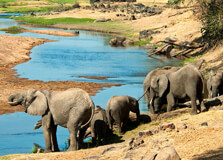
Iringa, nestled in the southern highlands of Tanzania, is a charming town known for its cool climate, scenic landscapes, and rich history. Perched on a cliff overlooking the Little Ruaha River, Iringa offers stunning views and a peaceful atmosphere. The town played a significant role during the German colonial era, with remnants of colonial architecture still visible today. Iringa serves as a gateway to Ruaha National Park, one of Tanzania’s largest and most biodiverse wildlife reserves, making it a popular stop for eco-tourists and safari enthusiasts. The region is also home to the Hehe people, known for their resistance against German rule under Chief Mkwawa. Local markets brim with vibrant crafts, fresh produce, and traditional wares, reflecting the area's cultural vitality. With its blend of history, nature, and culture, Iringa offers a unique Tanzanian experience that’s both tranquil and enriching, ideal for travelers seeking authenticity off the beaten path.
Explore MoreTanzania is situated in the East of Africa and officially known as the United Republic of Tanzania. It is formed by the amalgamation of Tanganyika and Zanzibar. Tanzania is a tourist’s paradise with 29 game reserves, 16 national parks and 40 controlled conservation areas and marine parks. The New York Times ranked Tanzania as the 7th destination to be visited in 2012 among a list of 45.
Tanzanian Shilling (TZS)
945,203 square km (364,898 square miles)
43,188,000 (estimated)
Swahili, English
+255
EAT (UTC+3)
The climate of Tanzania is tropical and the temperatures hover between 10 degrees and 20 degrees. The two major rainfall periods of Tanzania are December to April (uni-modal) and October to December and March to May (bi-modal).
The Geography of Tanzania is diverse in nature and covered by mountains, lakes, plateaus and plains. The northeast parts of Tanzania are covered by mountains, the north and west covered by the lakes and the central parts of Tanzania are covered with plateaus and plains. The wildlife parks of Tanzania are ecologically significant.
Territory & Capital
Tanzania lies between latitudes 1 degree and 12 degrees S and longitudes 29 degrees and 41 degrees E. It is surrounded by the Indian Ocean on the east, Kenya and Uganda on the north and the Democratic Republic of the Congo in the west.
Dodoma, with a population of around 324,347, is the capital of Tanzania. However, some of the government offices still remain in Dar es Salaam and thus it is still the commercial capital of the country.
Suitable Visiting Seasons :
The best time for the animal lovers to visit Tanzania is the period between June and October, for game viewing it is the period between December and May. June and July are the months when the highlands are full of flowers and enhance the scenic beauty of Tanzania.
The primary means of Transportation in Tanzania is the roadways. The railways, waterways and the airways are also effective ways to travel in Tanzania.
Contact the nearest Tanzanian embassy for visas and other immigration formalities.